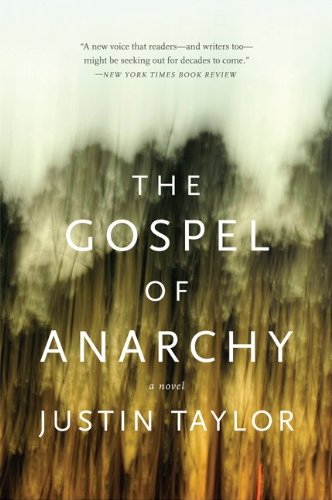
Brian Evenson

It should come as little surprise that the first novel by Justin Taylor, who in 2007 edited an anthology of doomsday scenarios called The Apocalypse Reader, is all about religion and anarchy. What’s more surprising, perhaps, is that it is also a paean to Gainesville, Florida, circa 1999. Indeed, the book follows its characters with an almost Google Maps specificity as they wander that city’s streets and scrounge through dumpsters. Taylor’s knowledge of dark corners is a plus, because The Gospel of Anarchy explores the no-man’s-land between college kids and townies: the hidden spaces of dropouts, punks, visionaries, and addicts. Shining at the Bottom of the Sea, the second novel by Stephen Marche, purports to be a compendium of Sanjanian literature, Sanjania being “little more than an invisible dot in the middle of the North Atlantic, almost in danger of becoming a phantom island.” Introduced by a scholar named Stephen Marche, this “anthology” illustrates Sanjanian literary development over several hundred years, from the distribution of pirate narratives and morality tales in the eighteenth century, to fiction’s engagement with the struggles of the colony under British rule, to the flowering of narrative that came with Sanjanian independence in the postcolonial era. 
Victor LaValle’s first book, Slapboxing with Jesus (1999), offered realistic depictions of working-class young people in the five boroughs, but by his second novel, The Ecstatic (2002), something stranger, if not outright weird, had begun to creep in. A little more weirdness came with each book: Big Machine follows a man who, having survived a death-obsessed cult, is recruited, at a bus station, to join what might be called a paranormal investigation squad. You could attribute some of the bizarre moments to the characters’ fraught mental states; perhaps, you might think, it’s all in their minds. But LaValle’s novella The